Physics, Chemistry, Microbiology and Engineering are all involved in purifying wastewater so that it can be safely returned to the environment.
Wastewater treatment plants can be divided into two major types:
Biological and Physical/Chemical.
Biological plants are more commonly used to treat domestic or combined domestic and industrial wastewater from a municipality. They use basically the same processes that would occur naturally in the receiving water, but give them a place to happen under controlled conditions, so that the cleansing reactions are completed before the water is discharged into the environment.
Physical/chemical plants are more often used to treat industrial wastewaters directly, because they often contain pollutants which cannot be removed efficiently by microorganisms-- although industries that deal with biodegradable materials, such as food processing, dairies, breweries, and even paper, plastics and petrochemicals, may use biological treatment. And biological plants generally use some physical and chemical processes, too.
A physical process usually treats suspended, rather than dissolved pollutants. It may be a passive process, such as simply allowing suspended pollutants to settle out or float to the top naturally-- depending on whether they are more or less dense than water. Or the process may be aided mechanically, such as by gently stirring the water to cause more small particles to bump into each other and stick together, forming larger particles which will settle or rise faster-- a process known as flocculation. Chemical flocculants may also be added to produce larger particles. To aid flotation processes, dissolved air under pressure may be added to cause the formation of tiny bubbles which will attach to particles.
Filtration through a medium such as sand as a final treatment stage can result in a very clear water. Ultrafiltration, nanofiltration, and reverse osmosis are processes which force water through membranes and can remove colloidal material (very fine, electrically charged particles, which will not settle) and even some dissolved matter. Absorption (adsorption, technically) on activated charcoal is a physical process which can remove dissolved chemicals. Air or steam stripping can be used to remove pollutants that are gasses or low-boiling liquids from water, and the vapors which are removed in this way are also often passed through beds of activated charcoal to prevent air pollution. These last processes are used mostly in industrial treatment plants, though activated charcoal is common in municipal plants, as well, for odor control.
Some examples of chemical treatment processes, in an industrial setting, would be
- converting a dissolved metal into a solid, settleable form by precipitation with an alkaline material like sodium or calcium hydroxide. Dissolved iron or aluminum salts or organic coagulant aids like polyelectrolytes can be added to help flocculate and settle (or float) the precipitated metal.
- converting highly toxic cyanides used in mining and metal finishing industries into harmless carbon dioxide and nitrogen by oxidizing them with chlorine
- destroying organic chemicals by oxidizing them using ozone or hydrogen peroxide, either alone or in combination with catalysts (chemicals which speed up reactions) and/or ultraviolet light
In municipal treatment plants, chemical treatment-- in the form of aluminum or iron salts-- is often used for removal of phosphorus by precipitation. Chlorine or ozone (or ultraviolet light) may be used for disinfection, that is, killing harmful microorganisms before the final discharge of the wastewater. Sulfur dioxide or sulfite solutions can be used to neutralize (reduce) excess chlorine, which is toxic to aquatic life. Chemical coagulants are also used extensively in sludge treatment to thicken the solids and promote the removal of water.
A typical treatment plant consists of a train of individual unit processes set up in a series, with the output (effluent) of one process becoming the input (influent) of the next process. The first stages will usually be made up of physical processes that take out easily removable pollutants. After this, the remaining pollutants are generally treated further by biological or chemical processes. These may 1) convert dissolved or colloidal impurities into a solid or gaseous form, so that they can be removed physically, or 2) convert them into dissolved materials which remain in the water, but are not considered as undesirable as the original pollutants. The solids (residuals or sludges) which result from these processes form a side stream which also has to be treated for disposal.
A common set of processes that might be found at a municipal treatment plant would be:
- Preliminary treatment to remove large or hard solids that might clog or damage other equipment. These might include grinders (comminuters), bar screens, and grit channels. The first chops up rags and trash; the second simply catches large objects, which can be raked off; the third allows heavier materials, like sand and stones, to settle out, so that they will not cause abrasive wear on downstream equipment. Grit channels also remove larger food particles (i.e., garbage).
- Primary settling basins, where the water flows slowly for up to a few hours, to allow organic suspended matter to settle out or float to the surface. Most of this material has a density not much different from that of water, so it needs to be given enough time to separate. Settling tanks can be rectangular or circular. In either type, the tank needs to be designed with some type of scrapers at the bottom to collect the settled sludge and direct it to a pit from which it can be pumped for further treatment-- and skimmers at the surface, to collect the material that floats to the top (which is given the rather inglorious name of "scum".) The diagram below shows the operation of a typical primary settling tank.



- Secondary treatment, usually biological, tries to remove the remaining dissolved or colloidal organic matter. Generally, the biodegradation of the pollutants is allowed to take place in a location where plenty of air can be supplied to the microorganisms. This promotes formation of the less offensive, oxidized products. Engineers try to design the capacity of the treatment units so that enough of the impurities will be removed to prevent significant oxygen demand in the receiving water after discharge.
 There are two major types of biological treatment processes: attached growth and suspended growth.
There are two major types of biological treatment processes: attached growth and suspended growth.
In an attached growth process, the microorganisms grow on a surface, such as rock or plastic. Examples are 1) open trickling filters, where the water is distributed over rocks and trickles down to underdrains, with air being supplied through vent pipes, 2) enclosed biotowers, which are similar, but more likely to use shaped, plastic media instead of rocks, and 3) so-called rotating biological contacters, or RBC's, which consist of large, partially submerged discs which rotate continuously, so that the microorganisms growing on the disc's surface are repeatedly being exposed alternately to the wastewater and to the air.
The most common type of suspended growth process is the so-called activated sludge system (see diagram below). This type of system consists of two parts, an aeration tank and a settling tank, or clarifier. The aeration tank contains a "sludge" which is what could be best described as a "mixed microbial culture", containing mostly bacteria, as well as protozoa, fungi, algae, etc. This sludge is constantly mixed and aerated either by compressed air bubblers located along the bottom, or by mechanical aerators on the surface. The wastewater to be treated enters the tank and mixes with the culture, which uses the organic compounds for growth-- producing more microorganisms-- and for respiration, which results mostly in the formation of carbon dioxide and water. The process can also be set up to provide biological removal of the nutrients nitrogen and phosphorus (see below).
After sufficient aeration time to reach the required level of treatment, the sludge is carried by the flow into the settling tank, or clarifier, which is often of the circular design. (An important condition for the success of this process is the formation of a type of culture which will flocculate naturally, producing a settling sludge and a reasonably clear upper, or supernatant layer. If the sludge does not behave this way, a lot of solids will be remain in the water leaving the clarifier, and the quality of the effluent wastewater will be poor.) The sludge collected at the bottom of the clarifier is then recycled to the aeration tank to consume more organic material. The term "activated" sludge is used, because by the time the sludge is returned to the aeration tank, the microorganisms have been in an environment depleted of "food" for some time, and are in a "hungry", or activated condition, eager to get busy biodegrading some more wastes. Since the amount of microorganisms, or biomass, increases as a result of this process, some must be removed on a regular basis for further treatment and disposal, adding to the solids produced in primary treatment.



Variations:
Sequencing Batch Reactor (SBR):The type of activated sludge system described above is a continuous flow process. There is a variation in which the entire activated sludge process take place in a single tank, but at different times. Steps include filling, aerating, settling, drawing off supernatant, etc. A system like this can provide more flexibility and control over the treatment, including nutrient removal, and is amenable to computer control.
Membrane Bioreactor (MBR): In this more recent innovation, treated water is pumped out of the aeration tank through banks of microfiltration membranes. Clarifiers are not needed. The sludge concentration can be higher than in a conventional system, which allows treatment in a smaller volume; and the sludge's ability to flocculate well is no longer a consideration. Low effluent solids concentrations can be achieved, which can helps in phosphorus removal and disinfection (see below). Click here for links to some commercial pages which discuss this process.
- Nutrient removal refers to the treatment of the wastewater to take out nitrogen or phosphorus, which can cause nuisance growth of algae or weeds in the receiving water.
Nitrogen is found in domestic wastewater mostly in the form of ammonia and organic nitrogen. These can be converted to nitrate nitrogen by bacteria, if the plant is designed to provide enough oxygen and a long enough "sludge age" to develop these slow-growing types of organisms. The nitrate which is produced may be discharged; it is still usable as a plant nutrient, but it is much less toxic than ammonia. If more complete removal of nitrogen is required, a biological process can be set up which reduces the nitrate to nitrogen gas (and some nitrous oxide). There are also physical/chemical processes which can remove nitrogen, especially ammonia; they are not as economical for domestic wastewater, but might be suited for an industrial location where no other biological processes are in use. (These methods include alkaline air stripping, ion exchange, and "breakpoint" chlorination.)
Phosphorous removal is most commonly done by chemical precipitation with iron or aluminum compounds, such as ferric chloride or alum (aluminum sulfate). The solids which are produced can be settled along with other sludges, depending on where in the treatment train the process takes place. ("Lime", or calcium hydroxide, also works, but makes the water very alkaline, which has to be corrected, and produces more sludge.). There is also a biological process for phosphorus removal, which depends on designing an activated sludge system in such a way as to promote the development of certain types of bacteria which have the ability to accumulate excess phosphorus within their cells. These methods mainly convert dissolved phosphorus into particulate form. For treatment plants which are required to discharge only very low concentrations of total phosphorus, it is common to have a sand (or other type of) filter as a final stage, to remove most of the suspended solids which may contain phosphorus.
- Disinfection, usually the final process before discharge, is the destruction of harmful (pathogenic) microorganisms, i.e. disease-causing germs. The object is not to kill every living microorganism in the water-- which would be sterilization-- but to reduce the number of harmful ones to levels appropriate for the intended use of the receiving water.
The most commonly used disinfectant is chlorine, which can be supplied in the form of a liquefied gas which has to be dissolved in water, or in the form of an alkaline solution called sodium hypochlorite, which is the same compound as common household chlorine bleach. Chlorine is quite effective against most bacteria, but a rather high dose is needed to kill viruses, protozoa, and other forms of pathogen. Chlorine has several problems associated with its use, among them 1) that it reacts with organic matter to form toxic and carcinogenic chlorinated organics, such as chloroform, 2) chlorine is very toxic to aquatic organisms in the receiving water-- the USEPA recommends no more than 0.011 parts per million (mg/L) and 3) it is hazardous to store and handle. Hypochlorite is safer, but still produces problems 1 and 2. Problem 2 can be dealt with by adding sulfur dioxide (liquefied gas) or sodium sulfite or bisulfite (solutions) to neutralize the chlorine. The products are nearly harmless chloride and sulfate ions. This may also help somewhat with problem 1.
A more powerful disinfectant is ozone, an unstable form of oxygen containing three atoms per molecule, rather than the two found in the ordinary oxygen gas which makes up about 21% of the atmosphere. Ozone is too unstable to store, and has to be made as it is used. It is produced by passing an electrical discharge through air, which is then bubbled through the water. While chlorine can be dosed at a high enough concentration so that some of it remains in the water for a considerable time, ozone is consumed very rapidly and leaves no residual. It may also produce some chemical byproducts, but probably not as harmful as those produced by chlorine.
The other commonly used method of disinfection is ultraviolet light. The water is passed through banks of cylindrical, quartz-jacketed fluorescent bulbs. Anything which can absorb the light, such as fouling or scale formation on the bulbs' surfaces, or suspended matter in the water, can interfere with the effectiveness of the disinfection. Some dissolved materials, such as iron and some organic compounds, can also absorb some of the light. Ultraviolet disinfection is becoming more popular because of the increasing complications associated with the use of chlorine.
We have purified and disinfected our wastewater and discharged a clean effluent into the receiving water. Now, what are we going to with all that  we generated along the way?
we generated along the way?
Sludge from primary settling basins, called primary or "raw" sludge, is a noxious, smelly, gray-black, viscous liquid or semi-solid. It contains very high concentrations of bacteria and other microorganisms, many of them pathogenic, as well as large amounts of biodegradable organic material. Because of the high concentrations, any dissolved oxygen will be consumed rapidly, and the odorous and toxic products of anaerobic biodegradation (putrefaction) will be produced. The greasy floatable skimmings from primary treatment are another portion of this putrescible solid waste stream.
In addition to the primary sludge, wastewater plants with secondary treatment will produce a "secondary sludge", consisting largely of microorganisms which have grown as a result of consuming the organic wastes. While not quite so objectionable, due to the biodegradation which has already taken place, it is still very high in pathogens and contains much material which will decay and produce odors if not treated further.
Ultimately, the sludge must all be disposed of. The way in which this is done depends on the quality of the sludge-- and determines how it needs to be treated. The most desirable final fate for these solids would be for beneficial use in agriculture, since the material has organic matter to act as a soil conditioner, as well as a some fertilizer value. This requires the highest quality "biosolids", free of contamination with toxic metals or industrial organic compounds, and low in pathogens. At a somewhat lower quality, it can be used for similar purposes on non-agricultural land and for land reclamation (e.g., strip mines). Poorer quality sludge can be disposed of by landfilling or incineration.
One commonly used method of sludge treatment, called digestion, is biological. Since the material is loaded with bacteria and organic matter; why not let the bacteria eat the biodegradable material? Digestion can be either aerobic or anaerobic. Aerobic digestion requires supplying oxygen to the sludge; it is similar to the activated sludge process, except no external "food" is provided. In anaerobic digestion, the sludge is fed into an air-free vessel; the digestion produces a gas which is mostly a mixture of methane and carbon dioxide. The gas has a fuel value, and can be burned to provide heat to the digester tank and even to run electric generators. Some localities have compressed the gas and used it to power vehicles. Digestion can reduce the amount of organic matter by about 30 to 70 percent, greatly decrease the number of pathogens, and produce a liquid with an inoffensive, "earthy" odor. This makes the sludge safer to dispose of on land, since the odor does not attract as many scavenging pests, such as flies, rodents, gulls, etc., which spread pathogens from the disposal site to other areas-- and there are fewer pathogens to be spread.
A liquid sludge, which might contain 3 to 6% dry weight of solids, can be dewatered to form a drier sludge cake of maybe 15 to 25 percent solids, which can be hauled as a solid rather than having to be handled as a liquid. Equipment used to dewater sludge includes centrifuges, vacuum filters, and belt presses or plate-and-frame presses. Chemical coagulants are commonly added to help form larger aggregates of solids and release the water.
 Click here to see an animation of a belt filter press in action.
Click here to see an animation of a belt filter press in action.
Further processes such as composting and heat drying can produce a drier product with lower pathogen levels. Another approach involves treatment with lime (calcium oxide), which kills pathogens due to its highly alkaline nature as well as the heat that is generated as it reacts with the water in the sludge; this also results in a drier product. A final disposal method which eliminates all of the pathogens and greatly reduces the volume of the sludge is incineration. This is not considered a beneficial use, however, and is becoming less popular due to public concerns over air emissions.
Sludges from physical-chemical treatment of industrial waste streams containing heavy metals and non-biodegradable toxic organic compounds often must be handled as hazardous wastes. Some of these will end up in hazardous waste landfills, or may be chemically treated for detoxification-- or even for recovery of some components for recycling. Recalcitrant organic compounds can be destroyed by carefully controlled high-temperature incineration, or by other innovative processes, such as high-temperature hydrogen reduction.
In the handling and treatment of both wastewater and sludge, a prime concern is
odor control.
In the sewers, prevention of anaerobic conditions and sulfide formation is an important consideration in preventing odors. Hydrogen sulfide is also the major cause of sewer corrosion. If the water is warm and the flow is not rapid enough to aerate the water and scour the pipes, addition of chemicals such as nitrate, hydrogen peroxide or iron compounds can be helpful. In processes where odors are inevitable, the areas must be contained and ventilated. The air then has to be passed through some type of treatment system, such as an activated charcoal bed, a chemical scrubber (often using hypochlorite solution), a compost pile type biofilter-- or the air can even be used as part of the air supply for an activated sludge system.
I have tried, on this page, to introduce the basics of wastewater treatment. There are many variations and different combinations of treatment processes, as well as innovative methods not discussed here. I have focused on conventional treatment processes, which tend to be built in concrete structures and use a lot of energy-consuming machinery, with the goal of eliminating pollutants. There has been considerable interest, recently, in more "low-tech", environmentally friendly, wastewater treatment processes which consume less energy and allow for recycling of more of the nutrients. My links page contains some information about some of these alternative treatment methods. Some companies involved in the production of phosphates for fertilizer use are even interested in recovering these compounds from wastewater to supplement the supply of mined phosphate rock. Water pollution control is a field in which much process research and engineering development is continuing to taking place.
Please let me know of any glaring inaccuracies or omissions you may find. (I am a chemist with a wastewater operator's license, not a sanitary or environmental engineer.)
 |
Computers in Water Pollution Control |
Computers find extensive use in the field of water pollution control. Software stream models are available to predict the effects of pollutants entering the waterways. These can be used by regulatory agencies to set limits on allowable discharges. The movement and treatment of pollutants in groundwater as a result of spills and leaks can be similarly modeled. Programs are available to help deal with the complexities of designing wastewater collection systems (sewers) and predicting the effects of storm water flows. Models are used by engineers to design the types of biological, chemical, and physical wastewater treatment processes described above, so that they will remove pollutants to the required levels. These programs can also be used by operations staff to optimize the treatment processes, and even for partial automation by accepting real-time information from sensors and using the information to control pumps, valves, aerators, etc. Software is available for scheduling equipment maintenance, tracking plant performance, preparing reports for regulatory agencies, and managing industrial pretreatment programs. High volume analytical laboratories can also use laboratory information management systems (LIMS) to keep track of samples, store analysis and quality control results, and produce reports. In many cases, instruments can be connected directly to the LIMS to reduce transcription errors.Source : http://www.geocities.com/rainforest/5161/wwtps.htm

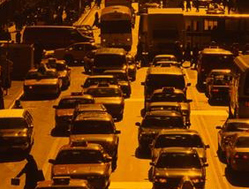
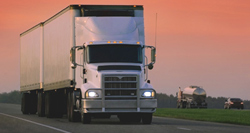
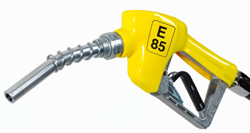




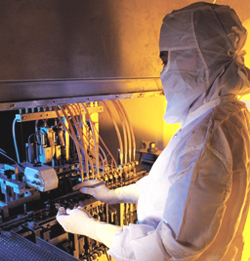
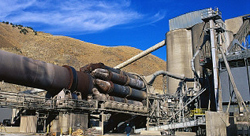

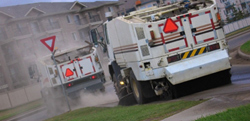

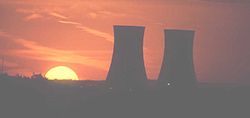
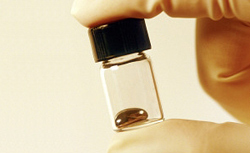
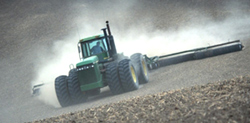





 Needless to say, spectrophotometers cost more than colorimeters, and are likely to be more delicate and less portable, as well. While many tests are done using visible light, some analyses also make use of the invisible ultraviolet or infrared portions of the spectrum. Scanning spectro photometers can also be used to identify some types of analytes by the wavelengths or colors of the light they absorb.
Needless to say, spectrophotometers cost more than colorimeters, and are likely to be more delicate and less portable, as well. While many tests are done using visible light, some analyses also make use of the invisible ultraviolet or infrared portions of the spectrum. Scanning spectro photometers can also be used to identify some types of analytes by the wavelengths or colors of the light they absorb.

 There are two major types of biological treatment processes: attached growth and suspended growth.
There are two major types of biological treatment processes: attached growth and suspended growth.
 we generated along the way?
we generated along the way?  Click
Click 


